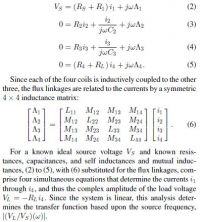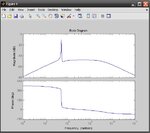peterkj93@gmail.com
Junior Member level 1
hi all,
I am a research student in electrical engineering. Now I came across a complicated system, whose transfer function has to be calculated and ploted in frequency domain. I have found out the values of all variables. Please help me ASAP. I have attached the problem.
Values are,
Rs = 50, R1 = 0.075, R2 = 0.23, R3 = 0.11, R4 = 0.032, RL = 100,
C2 = 34p, C3 =470p,
L1 = 1.2u, L2 = 11.2u, L3=0.80u, L4 =0.065u
M12=0.623u, M13= 0.00098u, M14 = 0.0059u, M23 = 0.014u, M24 = 0.0179u, M34 = 0.173u

https://obrazki.elektroda.pl/3231497500_1501150459.jpg
I am a research student in electrical engineering. Now I came across a complicated system, whose transfer function has to be calculated and ploted in frequency domain. I have found out the values of all variables. Please help me ASAP. I have attached the problem.
Values are,
Rs = 50, R1 = 0.075, R2 = 0.23, R3 = 0.11, R4 = 0.032, RL = 100,
C2 = 34p, C3 =470p,
L1 = 1.2u, L2 = 11.2u, L3=0.80u, L4 =0.065u
M12=0.623u, M13= 0.00098u, M14 = 0.0059u, M23 = 0.014u, M24 = 0.0179u, M34 = 0.173u

https://obrazki.elektroda.pl/3231497500_1501150459.jpg
